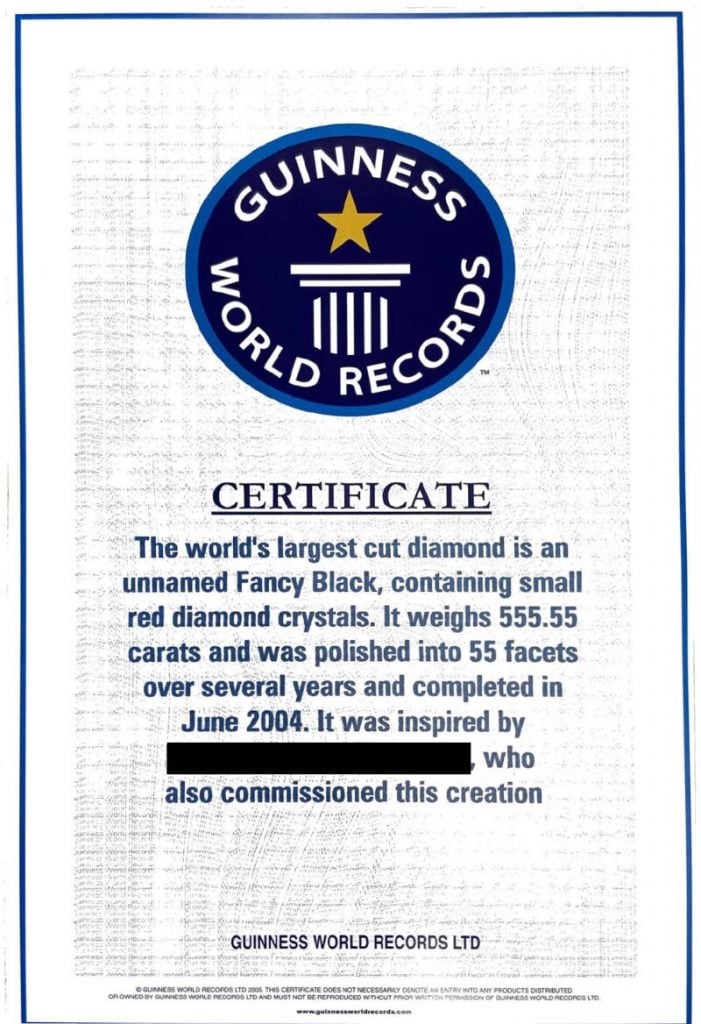Auctions
Sotheby’s Is Selling an Immense Black Diamond It Claims Came From Outer Space
Some experts question the extraterrestrial origins of carbonaro diamonds.

Some experts question the extraterrestrial origins of carbonaro diamonds.

Caroline Goldstein

Earlier this week, Sotheby’s issued a breathless press release that announced the sale of a large and extremely rare black diamond described as “a treasure from interstellar space.”
Dubbed “The Enigma,” the 555.55-carat diamond is the star of a single-lot sale at Sotheby’s Dubai this week. Also known as a carbonado, it is the largest cut diamond in the world, according to Guinness World Records, which certified it as such in 2006. It is also the largest Fancy Black Natural Color diamond in the world, according to Gubelin and the Gemological Institute of America in 2004.
The diamond has been cut into 55 facets, in a nod to the Middle Eastern Hamsa symbol, a palm-shaped amulet associated with the number 5 and a sign of protection and strength.

In 2006, Guinness World Records certified “The Enigma,” a 555.55-carat carbonado diamond as is the largest cut diamond in the world. Courtesy of Sotheby’s.
It’s not particularly sparkly—but it is really old, and it’s generating a lot of Internet chatter.
The name “The Enigma” is especially fitting, because as the press release says, “its origins are shrouded in mystery.” Experts are at odds in their assessment of where this or any other carbonado came from. Such diamonds, which are about 3.8 billion years old, are extremely rare and found only in Brazil and Central Africa.
The auction house speculates on the sale’s website that it could either be the result of “meteoric impacts producing natural chemical vapor deposition” or—a literally more far-out theory—have emerged “from supernovae explosions that formed diamond-bearing asteroids which ultimately collided with the Earth.”
Tim McCoy, the chair and curator of the meteorite collection at the Smithsonian National Museum of Natural History told Artnet News that it’s just as viable that the diamond came from inside the Earth as outside of it. McCoy also notes that we know a lot more about space than we used to—and “we don’t see anything like it from outer space.”

The Enigma, a 555.5-carat Black Diamond. Courtesy of Sotheby’s.
On the other hand, Stephen Haggerty, a professor of earth and environment at Florida International University, is pretty confident that the diamond is indeed from outside the earthly realm.
In a document shared with Artnet News, Heggerty wrote that “there has not been a single, scientifically sound alternative to the ET origin of carbonado,” pointing to a range of physical and chemical properties that he says “clearly demonstrate a non-Earth genesis.” Those were the subject of a study published in the 2006 Astrophysical Journal, which was based on infrared spectroscopy and made the case for the diamond’s interstellar origins.
The diamond is being sold with an estimate of $4 million to $7 million, and the auction house is accepting cryptocurrency. It is being sold without a reserve.